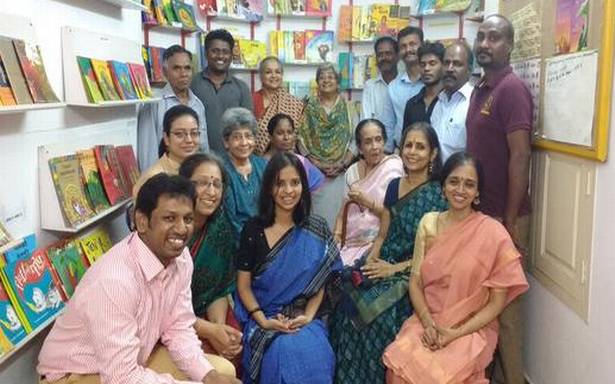As the Chennai-based publishing house Tulika turns 25, its founder Radhika Menon discusses the evolution of children’s storytelling and their role in it
“Gajapati Kulapati” — Radhika Menon laughs as she imitates her three-year-old granddaughter, who responded thus when asked what her favourite character from the Tulika title was.
The elephant has endeared himself to many readers, including the founder’s three grandchildren. “I think they like saying the name, that is the appeal of those books. They love the sound of it, which is what we liked too, when we first got the manuscript,” she says.
As the Chennai-based publishing house turns 25, Radhika looks back on how children’s storytelling has evolved and their role in it.
(Stay up to date on new book releases, reviews, and more with The Hindu On Books newsletter. Subscribe here.)
Before Tulika as we know it was founded in Chennai, it was Tulika Print Services in Delhi. “My sister-in-law and I did work for publishing houses, and that is where we learnt a lot about the processes of prepress and production,” she says.
So when she moved back to Chennai, she started Tulika in 1996, with the help of author Sandhya Rao — who wrote one of the publishing house’s first books, Ekki dokki — and graphic designer Ranjan Dey — who designed the now familiar crow logo.
“I felt the need for children’s books rooted in an Indian cultural context,” says Radhika, who herself grew up on a diet of Western authors. “So when we started publishing, it was to create books with Indian themes, exploring Indian ways of storytelling and Indian styles of writing and illustrating, reflecting the Indian mutilingual reality,” she continues.
A book cover of ‘Noon Chai and a Story’ | Photo Credit: Special Arrangement
Tulika started with books in three languages: Tamil, Malayalam and Hindi, and today has expanded to nine. “When children are introduced to picture books, it should be in the languages they have grown up listening to,” she says.
Over these 25 years, Tulika has explored different styles and themes, as well as the format of the book itself. “Folk stories were told in a contemporary manner and the themes were also unusual. For example All about Nothing, which is an imaginative telling of the story of zero by Nina Sabnani, was adapted from her animated film,” she says.
A book cover of ‘Oonga’ | Photo Credit: Special Arrangement
Nina Sabnani has also experimented with the shape of the book in itself, making Home to look like a Rajasthani kaavad. Some of their books forego illustrations for photographs by herpetologist Shekar Dattatri and Samina Mishra. What is also noticeable is the respect rewarded to the child reader — no issue is taboo as such.
Tulika has so far worked with over 150 illustrators. Discovering and nurturing talent are part of its growth as much as they were for Radhika’s personal journey as a schoolteacher at The School KFI, Chennai.
“The creative possibilities that picture books open up are exciting and often powerful. They open up imaginative ‘teachable’ moments which are so valuable as I discovered when I was teaching and with my own children,” she says.
And although her children were in their early teens by the time she started Tulika, “my grandchildren are growing up with Tulika books,” she says.
Source: Read Full Article


